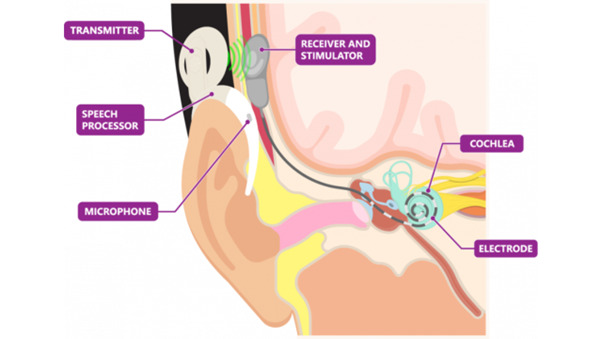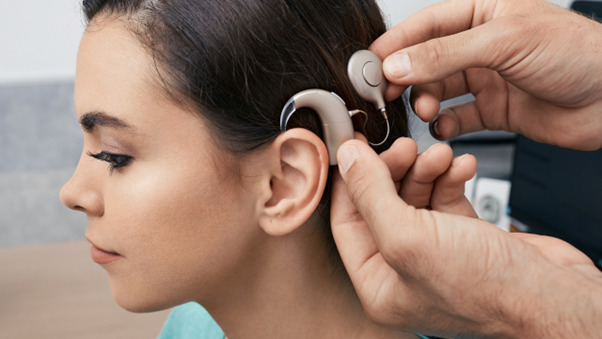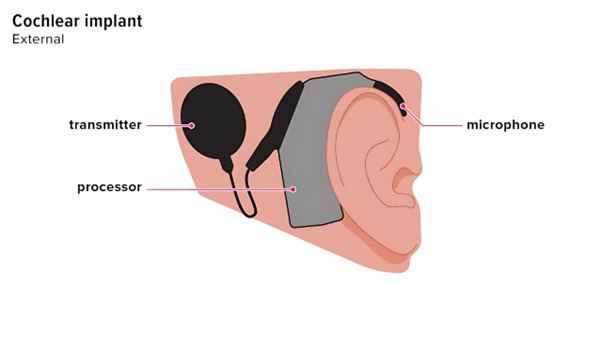Cochlear Implants: Types & How They Work
Cochlear implants have revolutionized the way we treat severe hearing loss. For people with profound hearing impairment, traditional hearing aids may no longer be effective. Cochlear implants offer an advanced solution by bypassing damaged parts of the ear and directly stimulating the auditory nerve.
In this article, we will explore what cochlear implants are, how they work, and the different types available. As an ENT specialist, I frequently advise patients on this life-changing technology, and understanding the process is vital to making informed decisions.
What Are Cochlear Implants?
Cochlear implants are electronic devices designed to assist those with severe hearing loss. Instead of simply amplifying sound like hearing aids, they bypass the damaged parts of the inner ear. By directly stimulating the auditory nerve, they enable users to perceive sound more clearly.
Although cochlear implants do not restore natural hearing, they provide a useful representation of sounds. This helps people recognise speech, music, and environmental sounds, significantly improving their ability to communicate.
Cochlear implants are often recommended when hearing aids are no longer effective. If you or someone you know is experiencing significant hearing loss, visiting an ENT clinic for an assessment is essential.
How Do Cochlear Implants Work?

The Normal Hearing Process
Before understanding cochlear implants, it’s essential to know how hearing works. Typically, sound waves move from the outer ear through the ear canal, causing the eardrum to vibrate. These vibrations then travel through the middle ear and reach the cochlea, a spiral-shaped structure in the inner ear.
Tiny hair cells in the cochlea convert these vibrations into electrical signals, which are sent to the brain via the auditory nerve. If the hair cells are damaged, hearing loss occurs.
The Role of Cochlear Implants
Cochlear implants bypass the damaged hair cells by directly stimulating the auditory nerve. The system is made up of two primary parts: an external sound processor and an internal implant.
The sound processor, worn behind the ear or on the body, captures sound and converts it into digital signals. These signals are sent to a transmitter, which passes them to the internal implant. The implant then converts these signals into electrical impulses that stimulate the auditory nerve, allowing the brain to interpret them as sound.
Types of Cochlear Implants
Cochlear implants can be categorised based on the location and design of the external sound processor. There are two main types:
1. Behind-the-Ear Processors
This is the most common type of cochlear implant. The external processor, which includes a microphone and a speech processor, is worn behind the ear. It picks up sound from the environment and sends it to the internal implant.
2. Off-the-Ear Processors
In this type, the sound processor is worn on the body, such as attached to the clothing or directly on the scalp. This option offers a more discreet and comfortable solution for individuals who prefer not to wear a device on their ear.
Both types have internal components that are surgically placed under the skin and inside the cochlea. Your ENT doctor will guide you in choosing the type that best suits your lifestyle and needs.
Who Is a Candidate for Cochlear Implants?

Not everyone with hearing loss is a candidate for cochlear implants. ENT doctors assess individuals based on specific criteria, which include the severity of hearing loss and the effectiveness of hearing aids.
Adults
Adults with moderate to severe hearing loss who gain little benefit from hearing aids are potential candidates. Many adults begin with one cochlear implant (unilateral) and may later consider implants in both ears (bilateral) as hearing loss progresses.
Children
Children, particularly infants, can greatly benefit from cochlear implants if they have severe hearing loss in both ears. Early implantation helps them develop speech and language skills. Most children who receive cochlear implants at a young age can better integrate into the hearing world.
Before recommending cochlear implants, your ENT clinic will perform various tests, including hearing assessments, balance tests, and imaging scans (MRI or CT). These tests help determine the best course of action for each patient.
The Cochlear Implant Procedure
Cochlear implant surgery is a routine procedure performed by ENT specialists. It typically lasts two to four hours and is done under general anaesthesia. The process involves placing the internal device under the skin and threading electrodes into the cochlea.
Recovery and Activation
After the surgery, there is a healing period of 1 to 4 weeks. Once the surgical site has healed, an audiologist activates the external sound processor. This is when patients begin to hear sounds through their implant.
However, the process doesn’t end there. Rehabilitation is crucial as patients need to train their brains to understand the new sounds. The brain requires time to adjust, and regular follow-ups with the ENT clinic will ensure the device is functioning optimally.
Expected Results and Limitations
Cochlear implants significantly improve hearing for most patients. The ability to hear speech without lip reading, identify environmental sounds, and communicate in noisy environments are some of the key benefits.
However, it is important to note that cochlear implants do not restore normal hearing. Initially, sounds may seem mechanical or artificial. With time and practice, patients learn to adapt and make sense of these sounds. This adjustment period varies from person to person.
While cochlear implants are highly effective, there are some risks involved, such as infections, device failure, or residual hearing loss in the implanted ear. It’s essential to have a detailed discussion with your ENT specialist before proceeding with the surgery.
Advances in Cochlear Implant Technology
Technological advancements in cochlear implants continue to improve patient outcomes. One exciting development is the ability to preserve residual hearing during surgery. Previously, patients would lose any natural hearing in the implanted ear. With newer techniques, ENT surgeons can now protect this remaining hearing while enhancing it with the cochlear implant.
Another innovation on the horizon is fully implantable systems. These devices would have all components placed under the skin, eliminating the need for external processors altogether.
Conclusion
Cochlear implants offer an incredible solution for individuals with severe to profound hearing loss. With the guidance of an ENT doctor, you can explore whether you are a suitable candidate for this transformative technology.
While cochlear implants take time to adapt to, they significantly improve communication and quality of life for many people. If you or someone you know is struggling with hearing loss, visit Cochlear Implant Singapore, the best ENT clinic in Singapore, for a comprehensive evaluation. Cochlear implants may be the answer to reconnecting with the world of sound.






